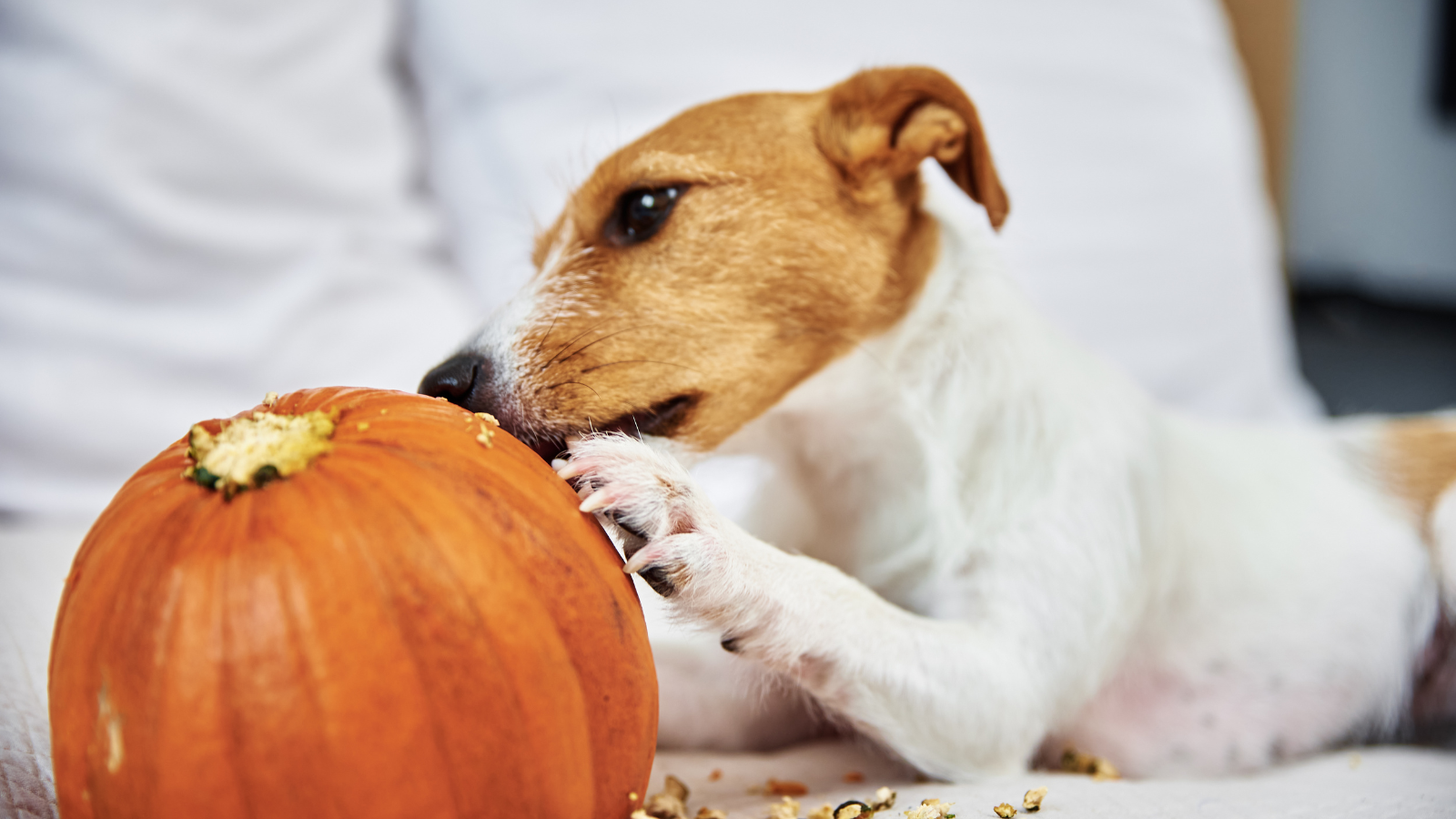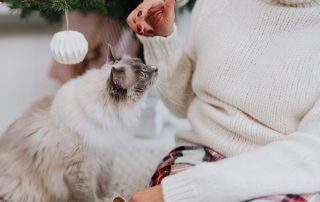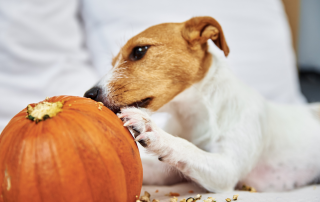Updated: September 26, 2023
Like many holidays, Halloween’s a great excuse to stock up on sweets and treats. Having all of these extra goodies around is not only a major temptation to people, but also our pets. As our friend Dr. Ted Purcell says, “Have a plan for today!”
“Treats and candies are not safe in a bag on the floor, a chair or bench – you need to be very mindful on Halloween, not just during, but also before and after.”
Beware of These Halloween Hazards for Pets
Here are some things for pet guardians to keep in mind to ensure they and their pets have an enjoyable evening.
Protect Your Pet from Toxic Treats
Amongst all the candies, chocolate is one of the most toxic for pets – Smaller chocolate covered items, such as raisins, are double trouble. Not only are both chocolate and raisins (dried grapes) toxic to pets, but the size and shape mimic many of the popular treats our companion animals may be used to scavenging from under chairs or tucked in cushions. The effect on a pet will depend on the amount and type of chocolate as well as the size of pet.
Should your pet ingest something dangerous, we recommend you contact your veterinarian or for a $85 USD fee, you can seek guidance from the 24/h Pet Poison Hotline at 1-855-764-7661. Please note we are not affiliated with this service.
You may also find it handy to learn more about potential risks by downloading out the ASPCA Animal Poison Control Center App or, for more in-depth information, the Pet Poison App by VET CPD.
Glow Sticks Are a Potential Hazard
Glow sticks are a common hazard this time of year. These items can have some harmful ingredients, and like chocolate, if your animal has chewed/ingested the contents/container of a glow stick, we advise you to call your veterinarian.
The Temptation of Treat Wrappers and Sticks
Sticks and wrappers are just as tempting as the real thing. Garbage left from our indulgences will most likely still have the odor and taste of candies. This can be an irresistible temptation to curious critters. Ingestion of any foreign substances can cause significant digestion issues, and these are no exception.
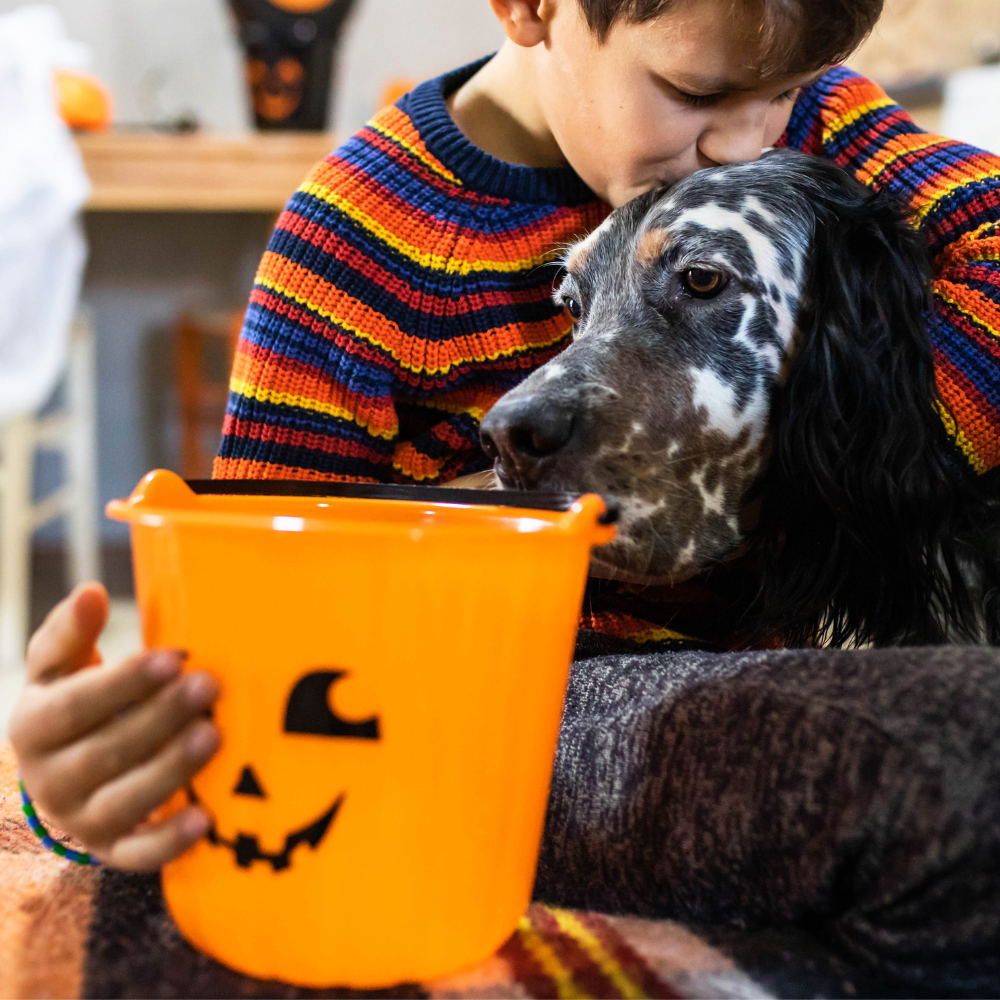
Sweeteners That Aren’t So Sweet for Pets
Artificial sweeteners, such as Xylitol, are also harmful and will negatively affect our animals. With more and more alternatives to white sugar, watching for these hazards is not just limited to Halloween treats. They are now often found in more common daily items such as breath mints, sugar free gum and sugar free peanut butter.
Dr. Michelle Meckelborg, Head Shelter Veterinarian at the EHS advises that:
“Xylitol causes a rapid drop in blood sugar, resulting in hypoglycemia, which typically manifests as weakness, stumbling and glassy eyed appearance. It can progress to seizures within 8-12 hours of ingestion.”
Be Mindful of Your Halloween Decorations
Decorations and lit candles can create a lot of curiosity, especially for younger animals. Pet guardians should be mindful of anything that’s left out that could be chewed on, swallowed, or pose a new hazard in a space where your animals may be used to freely accessing. If you have pets roaming your home, consider using electric candles rather than real ones to prevent an accidental fire.
How to Ensure a Pet-Friendly Halloween for All
As we gear up for the spookiest night of the year, it’s also important to remember that our furry companions want to join in on the fun too! By following these easy tips, you can ensure that Halloween is a delight for both your family and your pets.
Be Careful with Routine Changes on Halloween
Strange sounds, kids yelling, and lots of visitors in short periods of time are a big routine change. Our pets thrive when they have a reliable routine. Halloween can be a big upset to the usual evening activities. Be mindful to keep an extra eye on the door if you’re opening it frequently, as well as the extra sounds triggering reactive behaviour, such as hiding for cats and barking for dogs.
When trick-or-treaters are coming by, it’s a good idea to have a safe space such as a separate room or gated area for your pet to be with their own favourite (and pet friendly!) treat to keep them occupied and reduce risk of escaping or stress from the ghosts and goblins at the door.
Another option for guardians to consider if anxiety is a concern is pheromone diffusers or sprays such as Adaptil or Feliway (available to order from Bingo’s Pet Shop or your local pet store).
Pet Costumes: Comfort and Enjoyment Over Fright and Frills
Costumes might be fun for us, but they should also be comfortable and enjoyable for your pets. Wearing a strange outfit can be stressful for our pets if they haven’t been properly introduced to the costume over time with lots of positive encouragement, which could lead to behavioural issues. Costumes can also be restrictive and can create hazards for pets to get caught on and reduce their ability to navigate familiar obstacles, such as stairs.
If you put a costume on your pet and notice signs of stress such as:
- Stiff or lowered posture
- Attempts to physically avoid or remove the costume
- Lip licking
- Tail tucking or swishing tail for cats
- Flattened ears
Then it’s best to let them enjoy Halloween costume free! A Halloween themed collar or bandana can be a more comfortable alternative. For more information, check out our full resource guide on Costumes & Pets.
Minimize the Scare for Pets
While your costume might not scare your neighbour’s kids, theirs and your own could frighten pets. From face paint to Werewolf masks, the sudden influx of strange people and unfamiliar apparel/objects can come as a big shock to our companion animals. This can create anxiety or cause them to react fearfully or aggressive towards perceived threats. Talk to your veterinarian about possible calming aids and check out our resource on managing fear in canines.
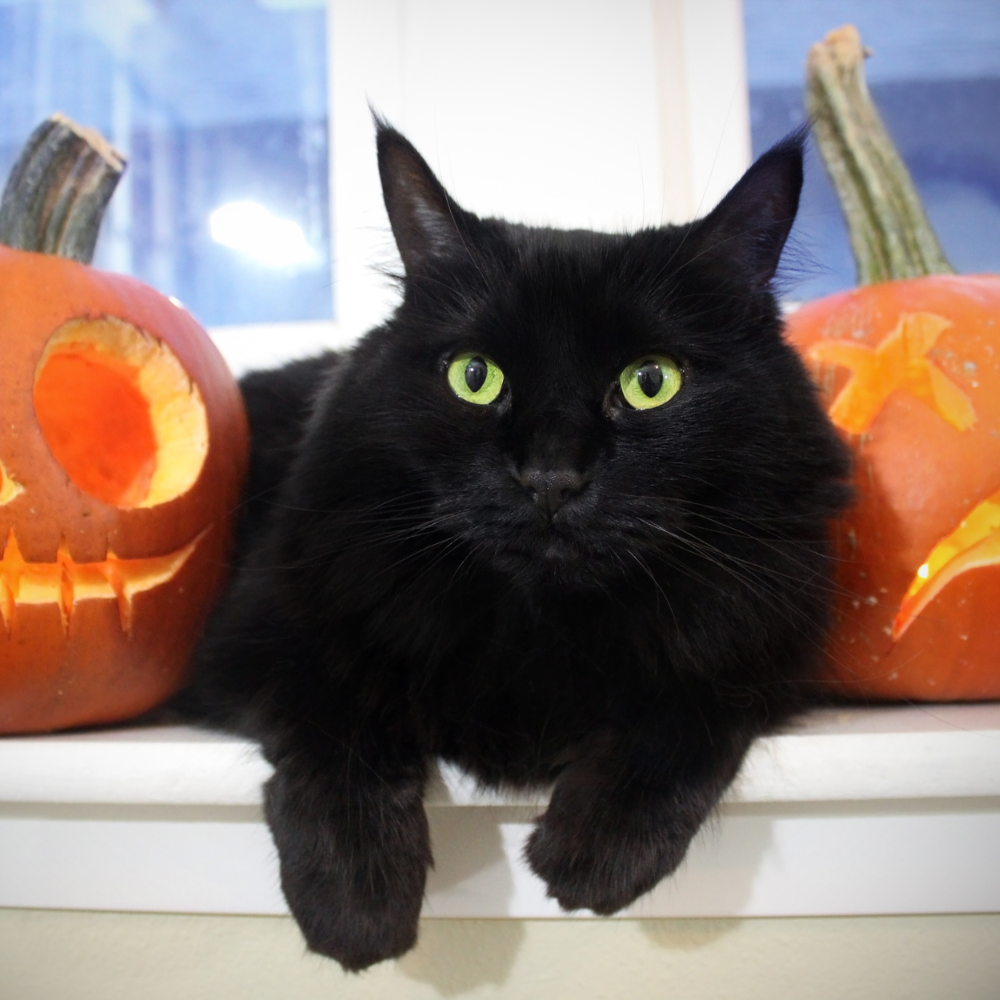
Keep Your Pet Visible While Trick-or-Treating
If you are out trick-or-treating or attending an event, ensure your pet is visible. With even shorter days, it’s recommended that if out after dusk, both you and your pet should have reflective or high-visibility wear on, such as leashes/collars for your pet that’ll help evening motorists see you both more clearly.
From the entire EHS family to yours, we wish everyone a happy and PET SAFE Halloween!
Originally Posted: October 28, 2020

